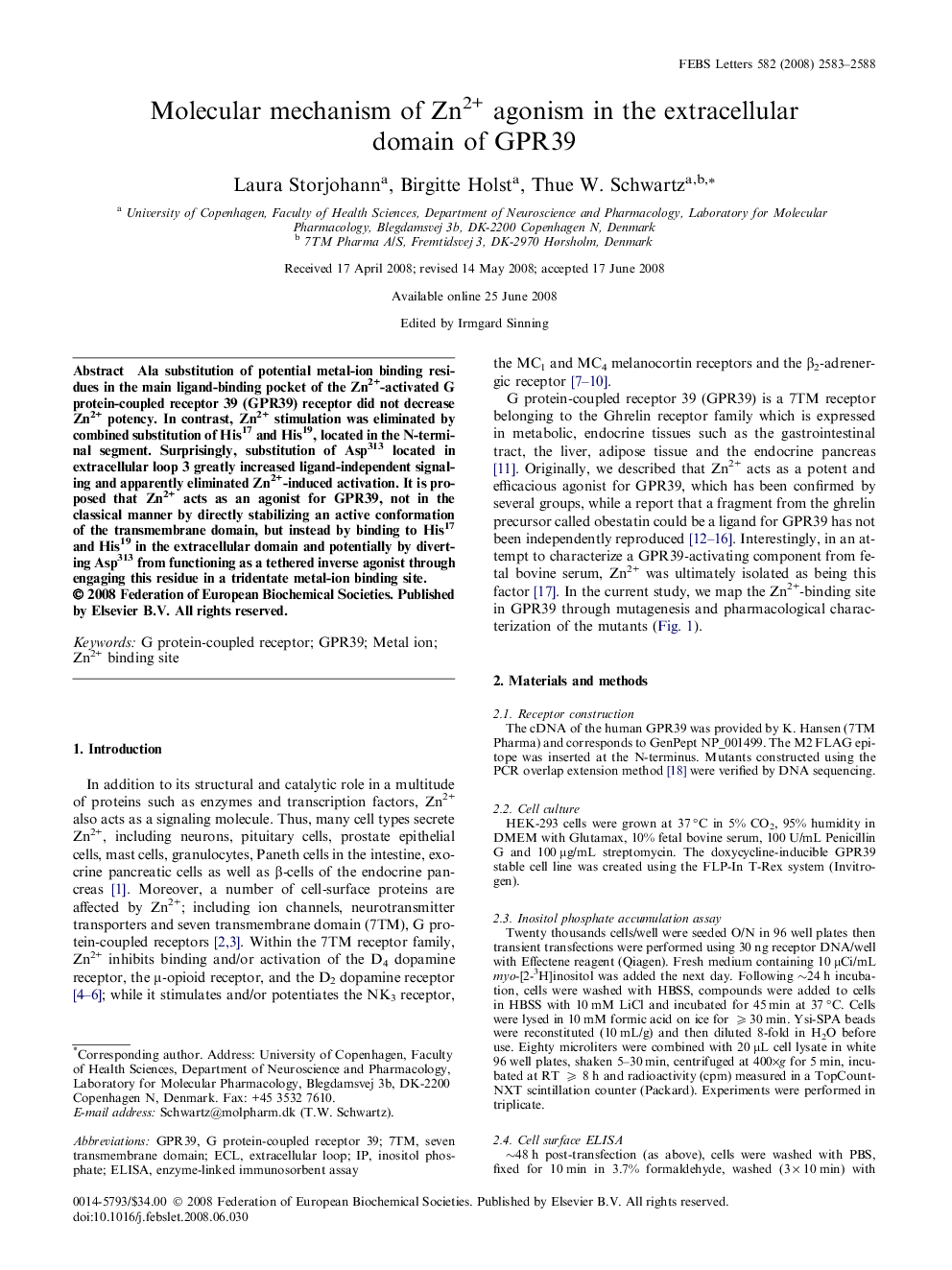| Article ID | Journal | Published Year | Pages | File Type |
|---|---|---|---|---|
| 10872156 | FEBS Letters | 2008 | 6 Pages |
Abstract
Ala substitution of potential metal-ion binding residues in the main ligand-binding pocket of the Zn2+-activated G protein-coupled receptor 39 (GPR39) receptor did not decrease Zn2+ potency. In contrast, Zn2+ stimulation was eliminated by combined substitution of His17 and His19, located in the N-terminal segment. Surprisingly, substitution of Asp313 located in extracellular loop 3 greatly increased ligand-independent signaling and apparently eliminated Zn2+-induced activation. It is proposed that Zn2+ acts as an agonist for GPR39, not in the classical manner by directly stabilizing an active conformation of the transmembrane domain, but instead by binding to His17 and His19 in the extracellular domain and potentially by diverting Asp313 from functioning as a tethered inverse agonist through engaging this residue in a tridentate metal-ion binding site.
Keywords
Related Topics
Life Sciences
Agricultural and Biological Sciences
Plant Science
Authors
Laura Storjohann, Birgitte Holst, Thue W. Schwartz,
